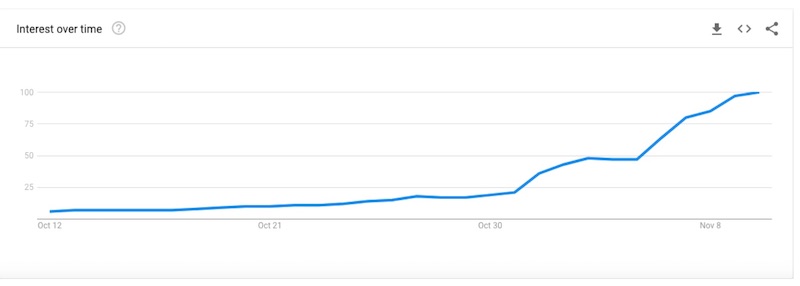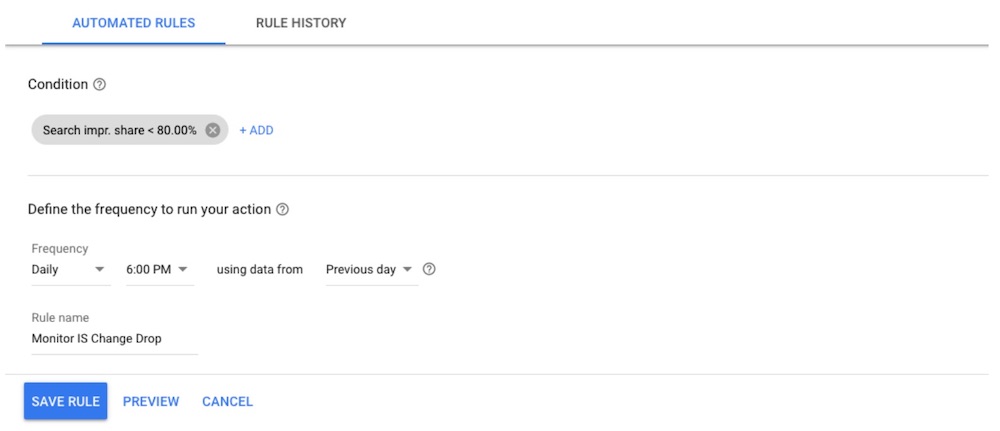18 Nov 4 Ways Automation Can Supercharge Your Holiday PPC Campaigns via @siliconvallaeys
Black Friday is almost here! Or did it already happen?
Thanksgiving falls so late this year, the holiday shopping season is six days shorter this year than last year. So things have gotten even more challenging for PPC pros.
Retailers like Target and Best Buy started running pre-Black Friday deals weeks before the usual start date of this seasonal event.
When so much of what marketers do have become automated and dependent on algorithms that predict conversion rates, what will this unexpected shift in retailer behavior mean for the automations we now depend on?
What can we do to protect ourselves from automation hiccups?
As I’ve advocated before, automation layering can provide answers.
It’s a way for advertisers to benefit from cutting edge machine learning from the ad engines while still retaining a level of control that would be near impossible with purely manual strategies.
In this post you’ll learn why this is the perfect time to look into automation layering and four ways you can start to protect your holiday campaigns with automation layering today.
Black Friday Started Early in 2019
The need to monitor and assist the machines in PPC applies year-round. But this Black Friday, managing the machines will be even more crucial.
For many retailers, plans and strategies were set around the traditional timelines we’ve come to expect where consumers wait to get the best deals on Black Friday, Cyber Monday and then continue shopping all the way through the final day where retailers can still offer free shipping so gifts arrive on time.
While retailers traditionally started leaking their specials and doorbusters a few weeks in advance to build up excitement and demand, this year big-name retailers started offering even bigger doorbusters and pre-Black Friday specials on November 8, exactly three weeks before Black Friday.
Messing with Timelines Messes with Algorithms
While it’s great for consumers when the deals start early and it gives retailers a longer window to make their revenue targets for the year, it does complicate things a bit for search marketers.
The crux of the problem is many marketers have become more dependent than ever on automated algorithms to set bids, allocate budgets, forecast demand, and update ads with inventory and offers.
At their core, the machine learning systems that help with this look for patterns to help predict future outcomes.
And when retailers throw a curveball and mess up these patterns, the machines may get confused and not always make the best decisions.
Budget Forecasting & Allocation
Chances are your shopping campaigns are already set up and ready to go for Black Friday.
But did early promotions from your competitors for certain products cause an earlier than usual spike in demand? Did that drain budgets reserved for later in the month too soon?

 Screenshot from Google Trends showing when interest in Black Friday starts
Screenshot from Google Trends showing when interest in Black Friday startsThat’s a hard question to answer, because we don’t really know if the demand for these products will be the same but has simply been spread out over a longer period. Or, if we will see an increase in overall demand with another big spike starting on Black Friday.
The answer (which we don’t know) impacts how we deal with budgets.
- Should we tee up additional budgets?
- Do we reserve existing budgets for a back-loaded scenario with most demand at the end of the month?
- Or should we instead front-load those budgets if demand may decrease earlier than usual?
The only certainty is that things seem to have changed and search marketers will have to be nimble and ready to adapt quickly in this more dynamic environment.
Bid Management
Another potential problem lies with advertisers who are automating their holiday campaigns with Smart Bidding or smart shopping campaigns.
While bid automation from Google has improved tremendously over the years, we continue to hear anecdotal stories about accounts in which Smart Bidding is delivering great results, but suddenly falls off a cliff.
One of the biggest challenges with bid automation is its lack of transparency. Advertisers are left guessing what happened and have no real way to fix things.
The only alternative then is to take back control and manage things manually.
But making that transition from Smart Bidding to another system can be laborious:
- Requiring finding the right initial bids and bid adjustments for audiences, dayparts, locations, and devices.
- Then instituting a process for in-house bid management leveraging a different set of more transparent tools and automations.
While Google says their bid automations know about Black Friday and will automatically adjust, did it also predict that some merchants would open their doors three weeks earlier this year?
Perhaps, but we don’t know for sure so we need to be on top of things and monitor what happens very closely.
Keep in mind that Google’s predictions work best without human intervention for longer seasonal events that last several weeks, like from Black Friday through the last day when free pre-Christmas shipping ends.
But what happens for short 3-day pre-Black Friday sales events. The prediction algorithms will respond too slowly to help advertisers.
Google itself says that for such short-term seasonality, advertisers should set a seasonality bid adjustment or modify their tCPA and tROAS to account for short-term unexpected fluctuations in conversion rates.
Here are four recommendations to leverage automation layering and supercharge your holiday PPC campaigns.
1. Monitor Competitors Through Impression Share
We’ve long wanted better access to Auction Insights in the ads API and ads scripts because it would make it easier to monitor when a competitor’s move is impacting an account and maybe warrant a response.
We could more easily monitor if a specific retailer was responsible for a decline in our own results.
But knowing which competitor is causing a shift in our own performance is less important than knowing something external is happening so we can take corrective action.

 Screenshot from Google Ads showing an automated rule to monitor IS going over a threshold that can be indicative of more seasonal competition.
Screenshot from Google Ads showing an automated rule to monitor IS going over a threshold that can be indicative of more seasonal competition.We’re basically asking if a change in our industry, with our competition, or with our customers is causing harm to our PPC performance.
We can check to see if this is happening through a plethora of ‘impression share’ related metrics. These are more important now than ever since the average position is no longer available in Google Ads.
We can set up a rule that notifies us if impression share losses are growing, which can tip us off to a competitor getting more aggressive for certain keywords earlier than expected.
2. Set Budget Alerts
If you’ve set unusually high budgets with little expectation that you’ll actually spend those amounts, it may be worth setting up a rule that lets you know you’re getting near the real budget you have in mind.
Of course, you may be happy to continue selling so long as ROAS targets are being met.
However, the reality is most advertisers do have some underlying real budget, and with all the possible volatility in PPC at this time of year, you should pay even closer attention to how much you’re spending on PPC.
3. Monitor Consumer Demand through Time Comparisons
We don’t really know what will be the break-out products of the year, so to help you stay on top of where consumer demand is going, consider setting up a report that compares week-over-week costs for queries or keywords.
Then look for the biggest gainers and keep an especially close eye on whether increases in cost have also come with an equivalent gain in sales.
4. Monitor Anomalies in Smart Bidding
I’ve said many times that automated bidding isn’t fully automatic. It simply automates certain aspects we used to do manually.
So when using Smart Bidding, it’s worth setting up some monitors to know if average CPCs are getting out of whack.
As your competitors bid more aggressively on their loss leaders, your costs may rise too, even if the same products aren’t your loss leaders.
A simple alert that tells you when a keyword in an automatically managed campaign exceeds a pre-set CPC threshold can help you catch problems caused by your competitors more quickly.
Conclusion
With some retailers unexpectedly starting Black Friday sales earlier than before during an already volatile time of year for online retailers, it’s important to have checks in place for your automated systems.
Automation layering can help you control and assist the machines without requiring countless hours of manual labor.
More Resources:
- Holiday PPC Strategy: 11 Steps to Drive Greater Profit This Year
- 4 Insider Search Tips to Influence Holiday Shoppers
- A Complete Guide to Holiday Marketing
Image Credits
All screenshots taken by author, November 2019
Sorry, the comment form is closed at this time.